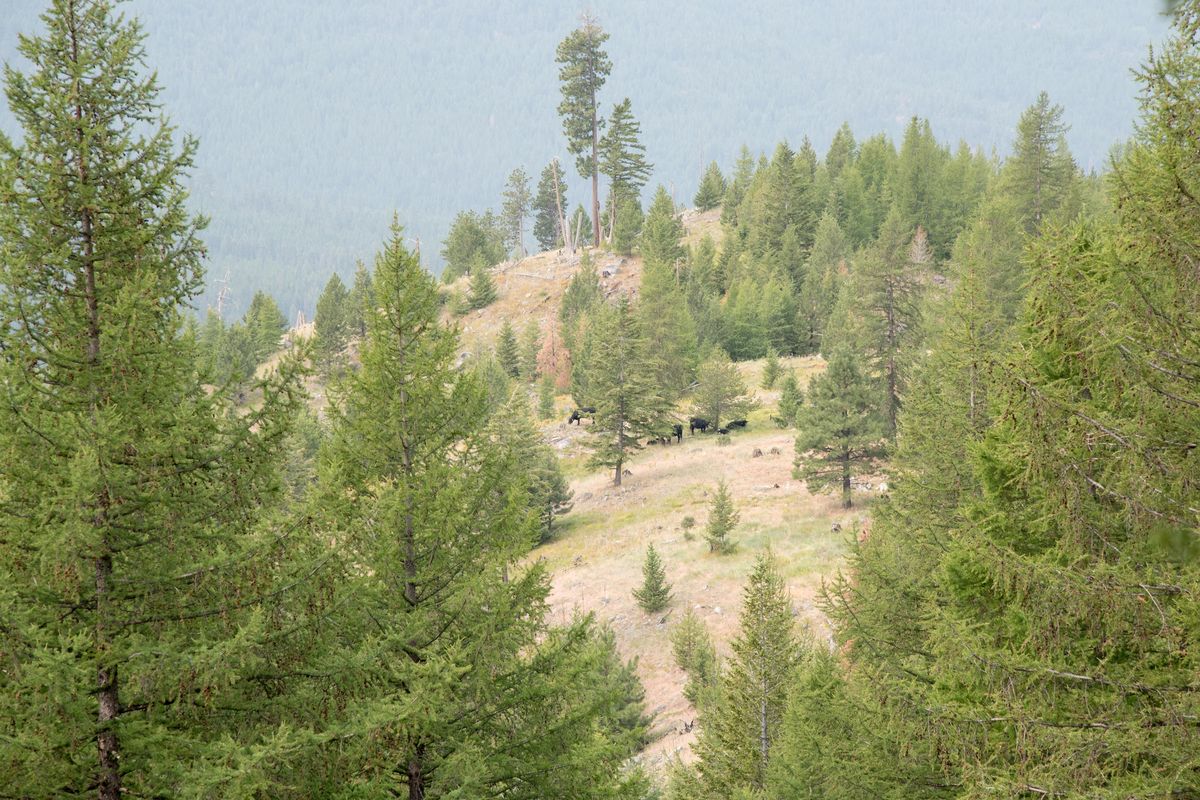Togo wolf pack members kill another cow in northeast Washington

Members of the Togo wolf pack killed a cow in the Colville National Forest and injured another last week, according to state wildlife officials.
The Togo pack is responsible for five depredations in the last 10 months, including two in November 2017 and one in May.
On Wednesday Washington Department of Fish and Wildlife officials were notified about a potential wolf depredation near Danville, Washington in Ferry County.
WDFW staff investigated the dead cow and documented “bite lacerations with associated hemorrhaging, signs of a struggle down a steep hill and around the cow carcass, and recent wolf activity in the area,” according to a WDFW news release.
The cow was grazing on a U.S. National Forest allotment.
Based on that information WDFW officials confirmed that the cow was killed by a member or members of the Togo pack.
The rancher was using wolf deterrents including a Fox light and ranger riders. Additionally the rancher turned his cows out later in the season so the calves would be stronger and larger and the rancher removed sick or injured cattle, according to the news release.
A range rider reported another potential depredation on Thursday. According to the release a 350-pound calf, owned by the same producer, was attacked and injured by a wolf. On Friday WDFW staff investigated and confirmed that the attack was a wolf attack.
“In four of the five incidents, producers had used at least two pro-active preventive strategies to deter wolf predation as called for in the WDFW wolf-livestock interaction protocol,” according to the release.
WDFW’s lethal removal policy allows killing wolves if they prey on livestock three times in a 30-day period or four times in a 10-month period. That policy was developed in 2016 by WDFW and its 18-member Wolf Advisory Group, which represents the concerns of environmentalists, hunters and livestock ranchers.
The policy also stipulates that cattle producers have employed at least two proactive deterrence techniques
In 2017, WDFW approved the killing of members of the Smackout pack after confirming four attacks on livestock.
The existence of the Togo pack was confirmed in late 2017. The pack was named in March. Two of the kills attributed to the Togo pack occurred in November before the Togo pack was confirmed by WDFW.
Over the weekend WDFW staff deployed remote cameras in an effort to document how many wolves are in the pack. According to WDFW estimates, there are a minimum of two wolves in the pack. There have been reports of a third adult wolf, however those reports have not bee confirmed, according to a release.
The confirmed pair produced an unknown number of pups this spring.
The adult male was fitted with a GPS collar in June and the location data is being shared with ranchers and Ferry County officials.
Wolves were extirpated from Washington through shooting, trapping and poisoning by the 1930s. The gray wolf was federally listed as an endangered species in 1973. In 2008, Washington documented its first breeding wolf pack in roughly 70 years as the carnivores began naturally dispersing back into the state from Canada, Idaho and, later, Oregon.
Under state law, wolves are listed as an endangered species and are federally protected in the western two-thirds of the state.
Despite documented losses of roughly a dozen wolves a year from selective state-authorized lethal control, plus poaching, vehicle collisions and other human-related causes, Washington’s wolf population has steadily grown each year. A minimum of 122 wolves, 22 packs and 14 successful breeding pairs was reported by the WDFW this winter.